Desert Landscape Maintenance Practices
Reclamation Facility Salt River Valley, Arizona
Before
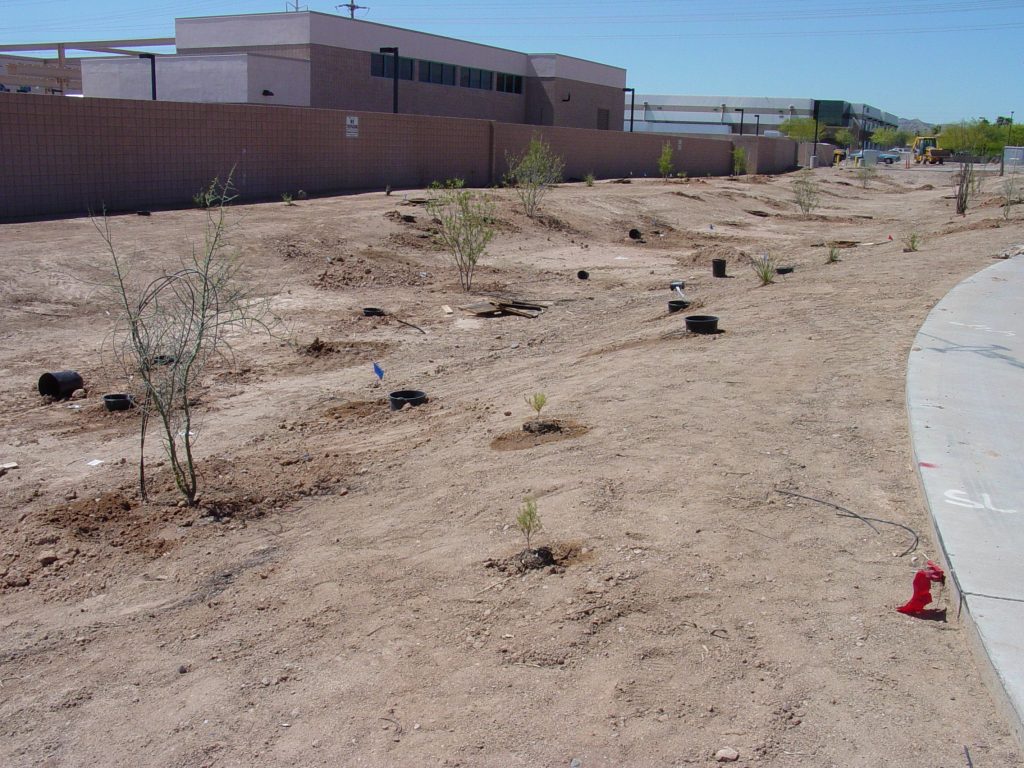
City Reclamation Facility, Landscape Architect, Galen Drake/Install CDG Development, landscape under construction in 2004, Blue Palo Verde (Cercidium floridum/24″ Box/AZT Nursery) same view below. Photo RBond
Serving in the Central Arizona area for twenty years as a Landscape Contract Administrator offered me numerous opportunities to customize and develop an innovative approach to desert landscape maintenance. Working in a municipal city water conservation office our goal was to set a horticulture standard consistent with “proper” green industry standards while staying within our budget and procurement policies. This customized maintenance approach promoted cultural practices that supported the sustainable messaging put forth to the public thru various valley wide water conservation programs. Those currently include landscape work shops, xeriscape literature, home water audits, landscape rebates and demonstration gardens. These valuable resources are available free to the public to promote a standard of desert horticulture that ultimately saves water and helps mitigate the valleys heat island effects. Practice what you preach as they say…
After

Landscape as it looked in 2018, Blue Palo Verde (Cercidium floridum/24″ Box/AZT Nursery). Photo RBond
Working with the LA and install contractor I specified and nursery tagged all the trees on this site from the specimens showcased in the Arizona Municipal Water Users Associations “Landscape Plants for the Arizona Desert“.
Before

Landscape under construction in 2004, Velvet Mesquite (Prosopis velutina/24″ Box/AZT Nursery) same view in photo below. Photo RBond
Years of careful selective pruning achieved a continuous canopy and sculptured look. Arborists, students and contractors were screened before any pruning work was authorized. A must.
After
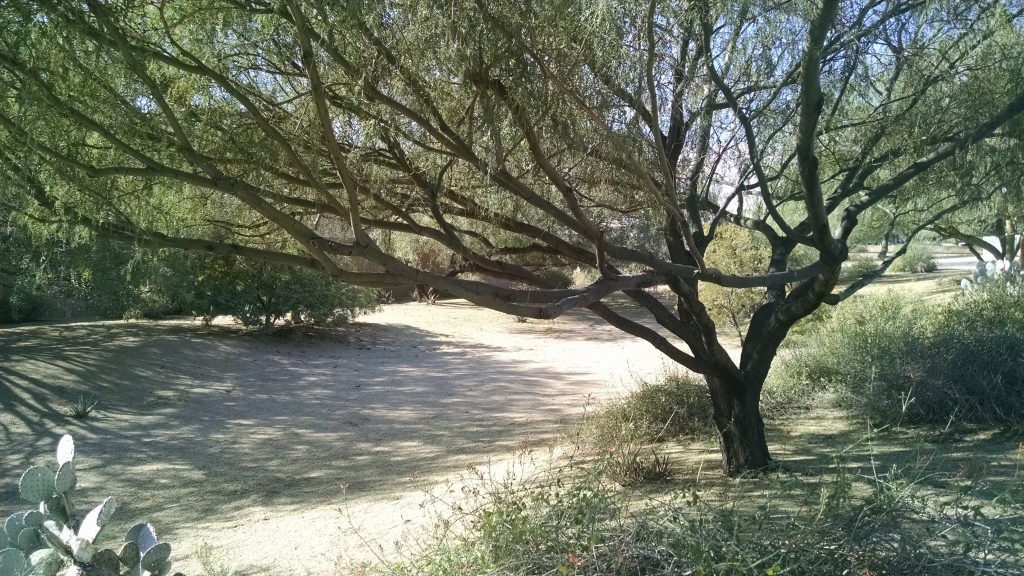
Velvet Mesquite (Prosopis velutina/24″ Box/AZT Nursery) same view in before photo above. Photo RBond
Before
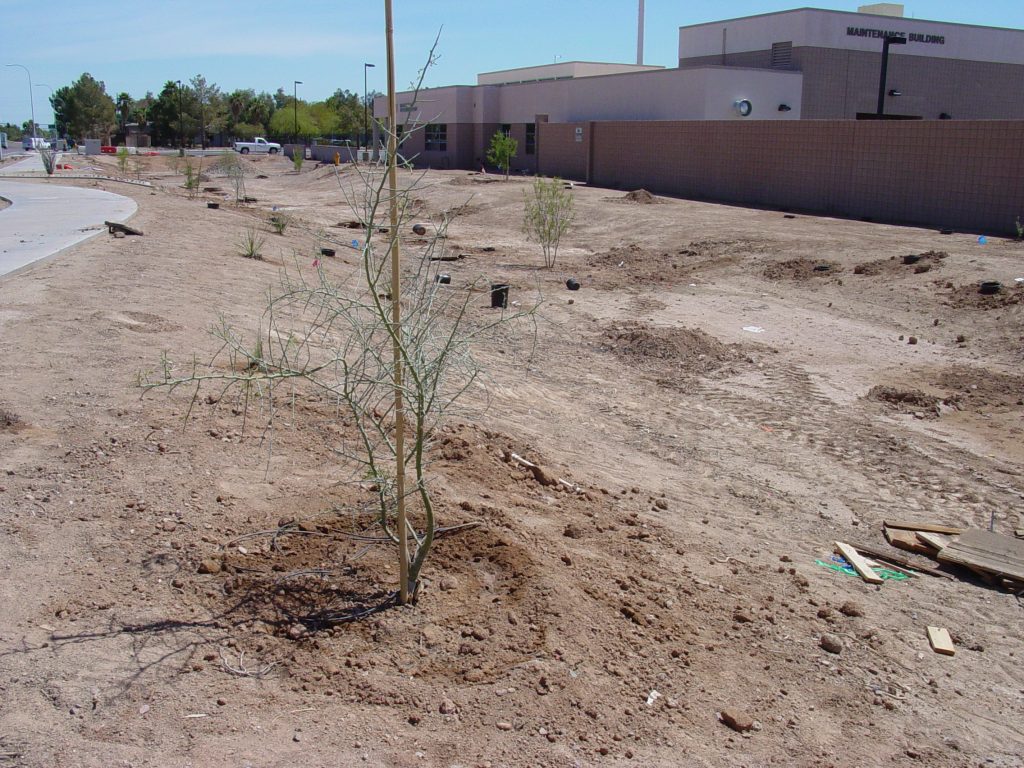
Blue Palo Verde, (Cercidium floridum/24″ Box AZT Nursery) planted in 2004, same view shown below. Photo RBond
After
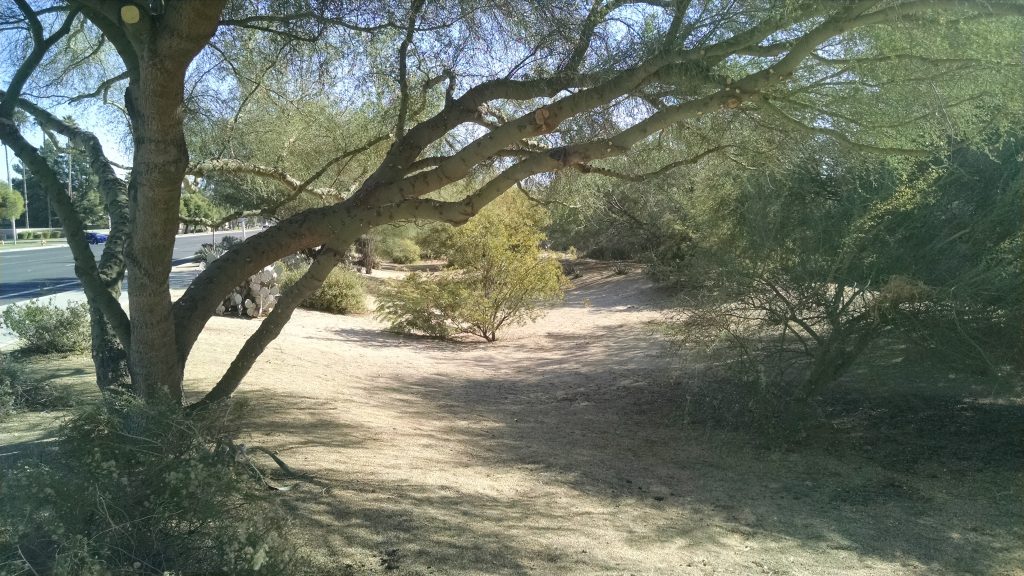
Blue Palo Verde, (Cercidium floridum/24″ Box AZT Nursery) in 2018 several years after planting in 2004. Photo RBond
My approach to landscape maintenance called for strict over sight into selecting contractors, students and arborists with the necessary skill sets to prune, plant and repair. Tree work, Irrigation, weed control, pest control, removals are all sub contracted out to competent contractors.
Before
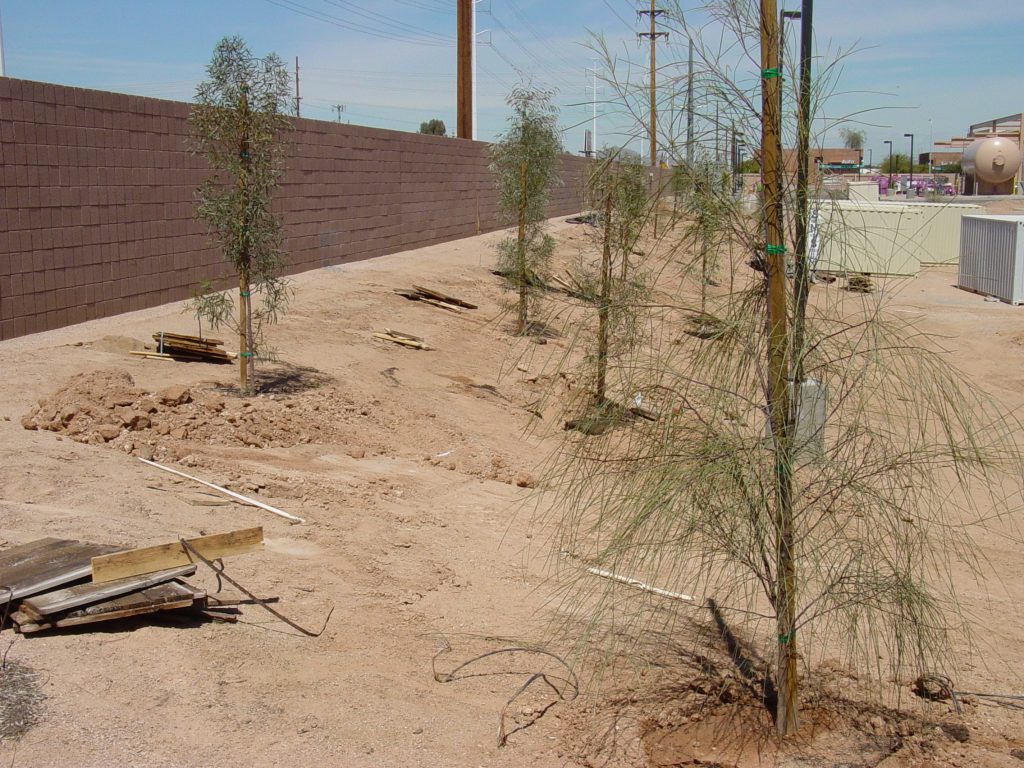
Back retention area photographed in 2004, Shoestring Acacia (Acacia stenophylla/24″ Box/Western Tree Nursery) and Coolibah (Eucalyptus microtheca/24″ Box/Western Tree Nursery) below years after planting in 2018. Photo by RBond
After
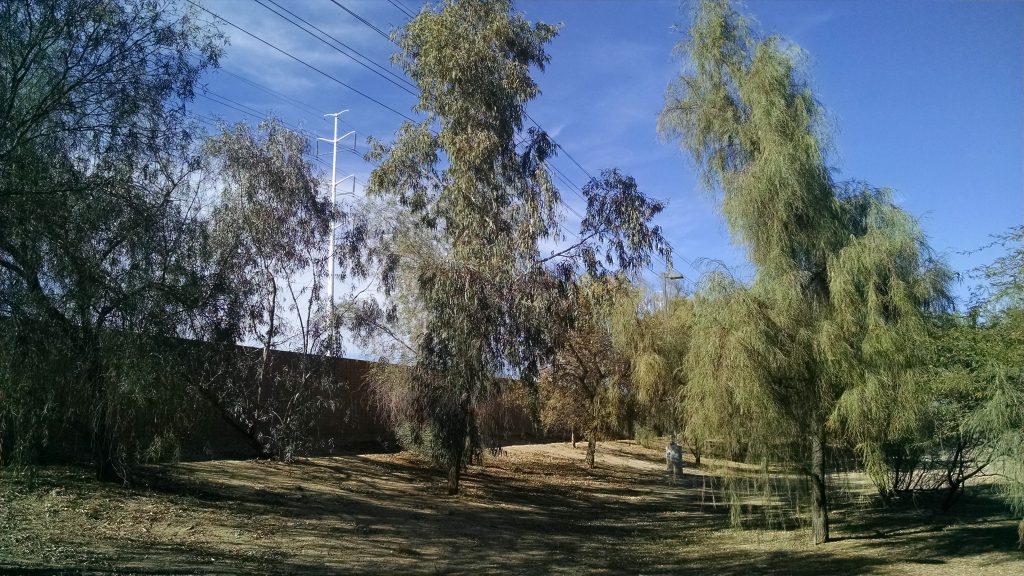
Back retention area photographed in 2018, Shoestring Acacia (Acacia stenophylla/24″ Box/Western Tree Nursery) and Coolibah (Eucalyptus microtheca/24″ Box/Western Tree Nursery) above years after planting in 2004. photo by RBond
Before
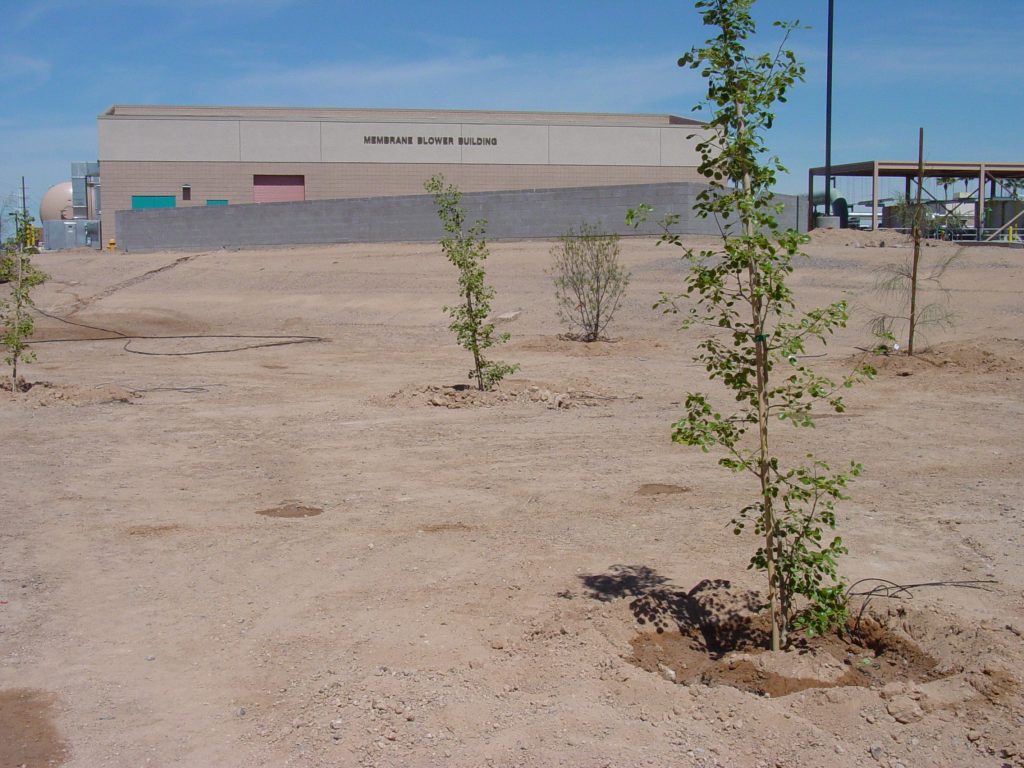
Back retention area photographed in 2004, Indian Rosewood (Dalbergia sissoo/24″ Box/Western Tree Nursery). Photo RBond
After

Back retention area photographed in 2018, Indian Rosewood (Dalbergia sissoo/24″ Box/Western Tree Nursery), careful consideration to crown elevation standards to induce proper trunk caliper were followed. Crown elevations completed several years after planting by TreeScape. Photo RBond
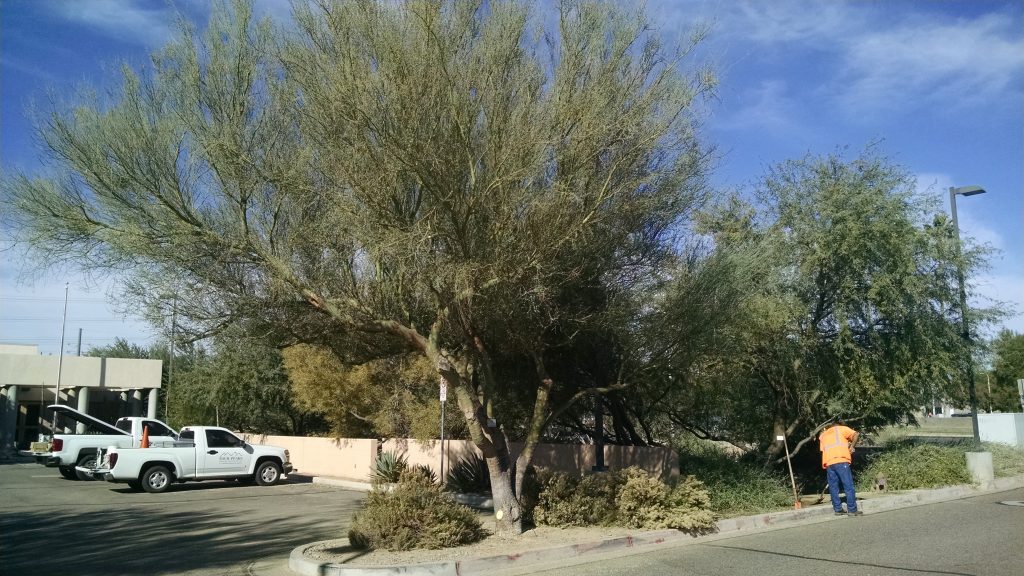
Four Peaks Landscape Management Irrigation specialist Jesse repairs irrigation break under curbing, Jesse and Four Peaks has worked with me on my projects for over ten years. Good Contractors are key to good results. Photo RBond 2018
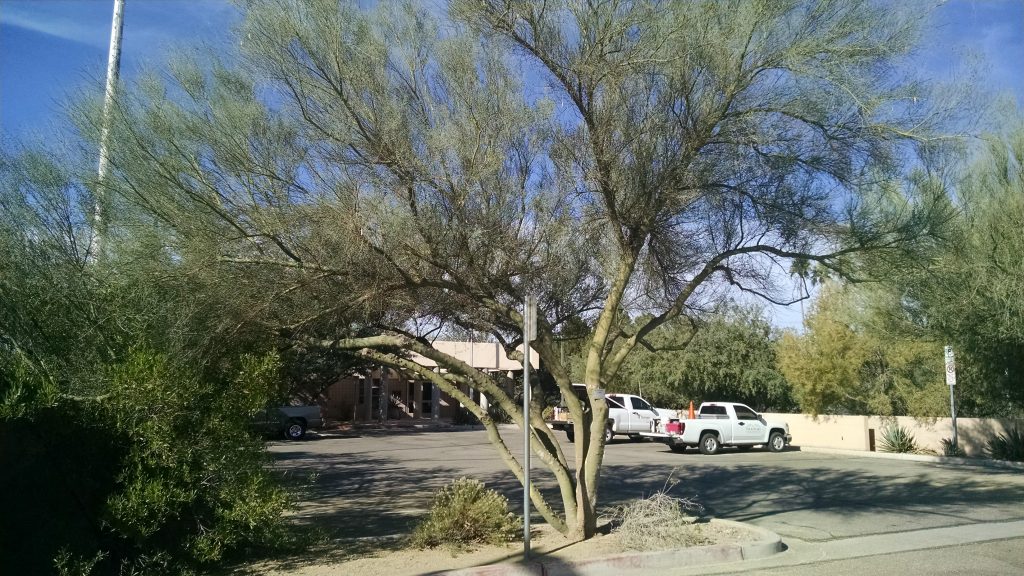
Wrong tree in the wrong place, but careful pruning maintains truck clearances and minimal damage. Can be expensive. PhotoRBond 2018
Environmental Services Building Salt River Arizona, Arizona 2001 – 2018
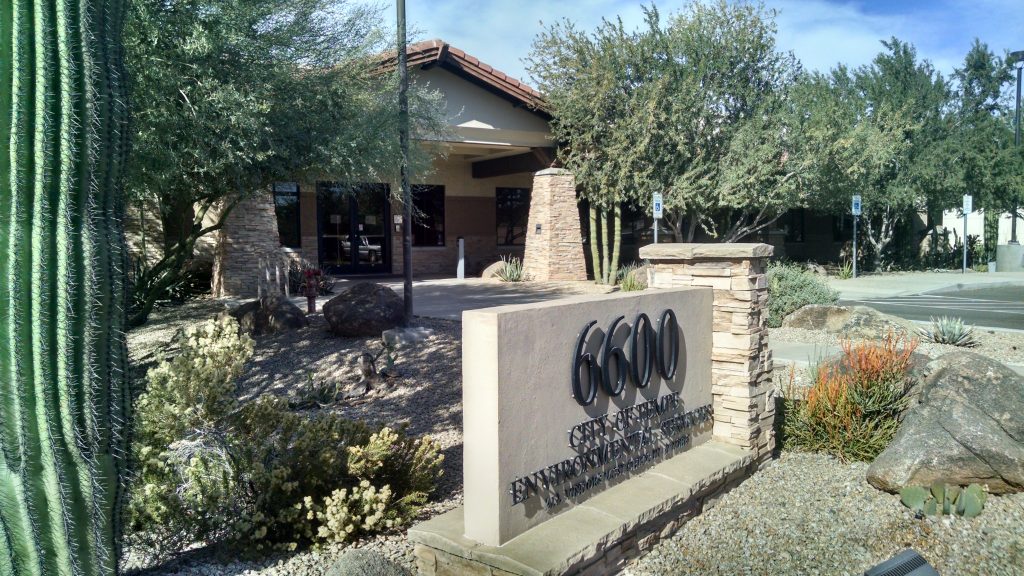
Front entrance after 2016 remodel, Landscape Architect Dennis Pelts ASLA / Install ISS Grounds Control. Photo RBond 2018
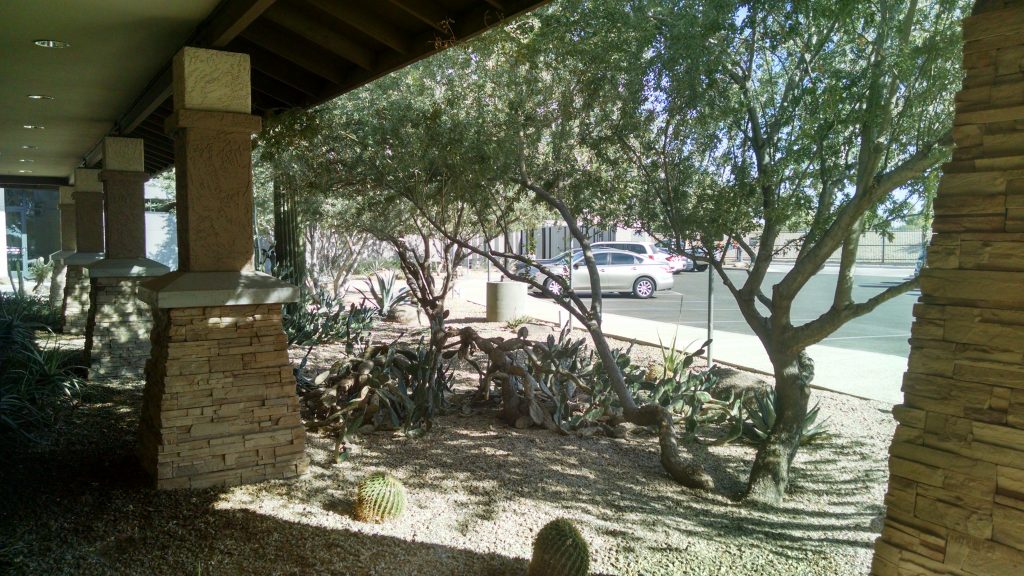
View from offices, Iron Wood (Olneya tesota) salvaged from on site. Photo RBond 2018
Before
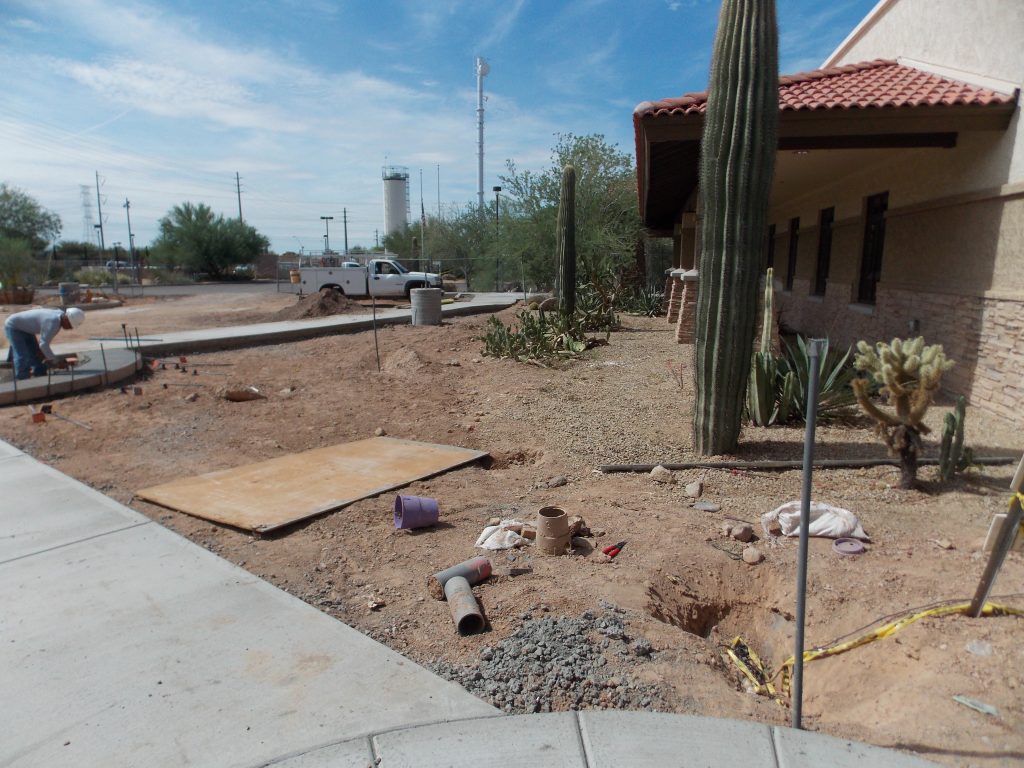
Site under construction 2015.
After
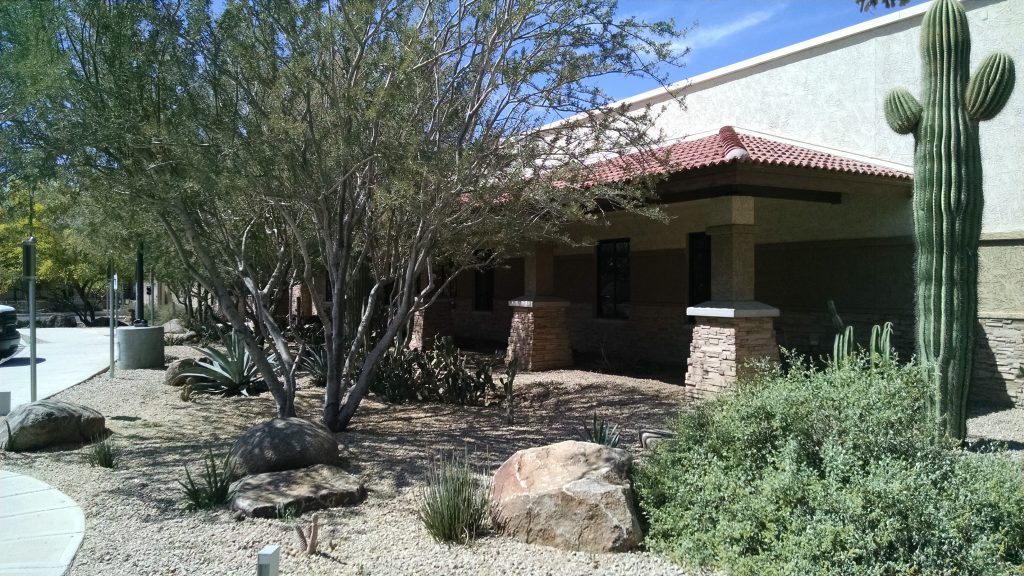
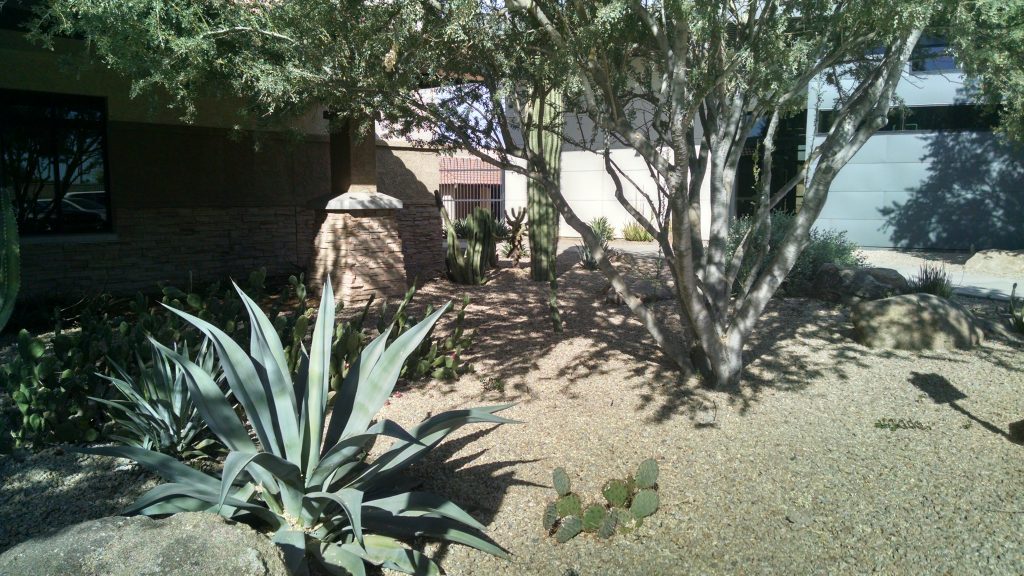
After remodel 2018, Ironwood (Olneya tesota), Salvage by Native Resources. Webers Agave (Agave weberi). Photo RBond 2018
Before
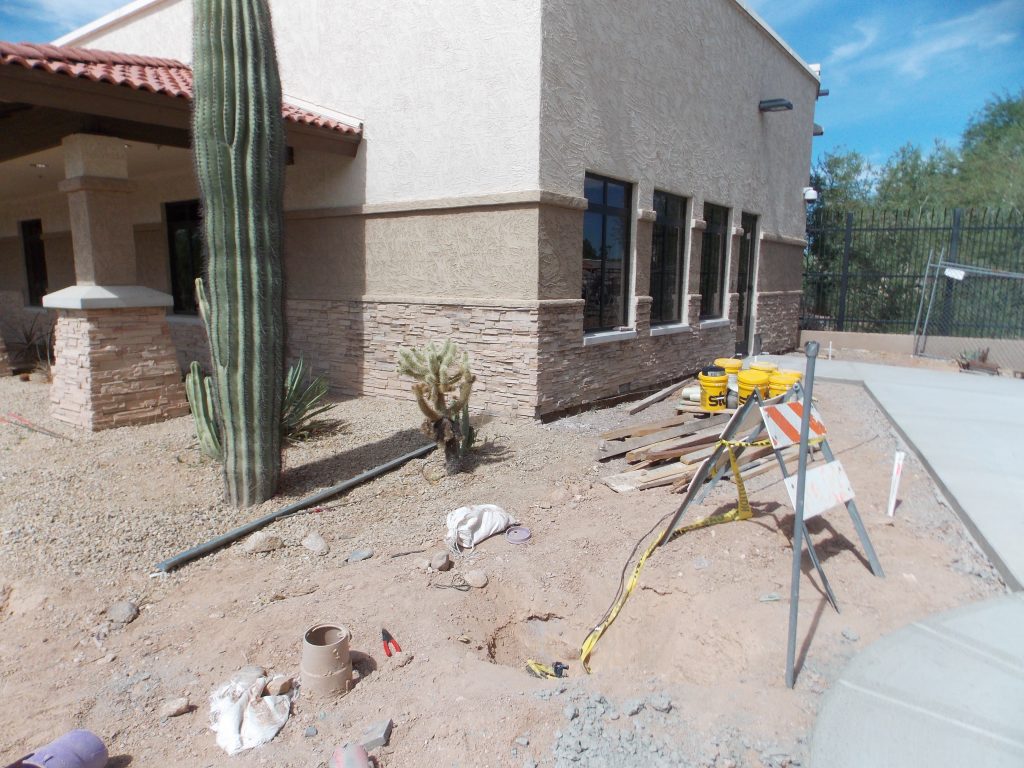
A dozen 60” Ironwoods (Olneya tesota) were salvaged for reuse on this site in 2015, one to be planted here. Photographed RBond 2018
After
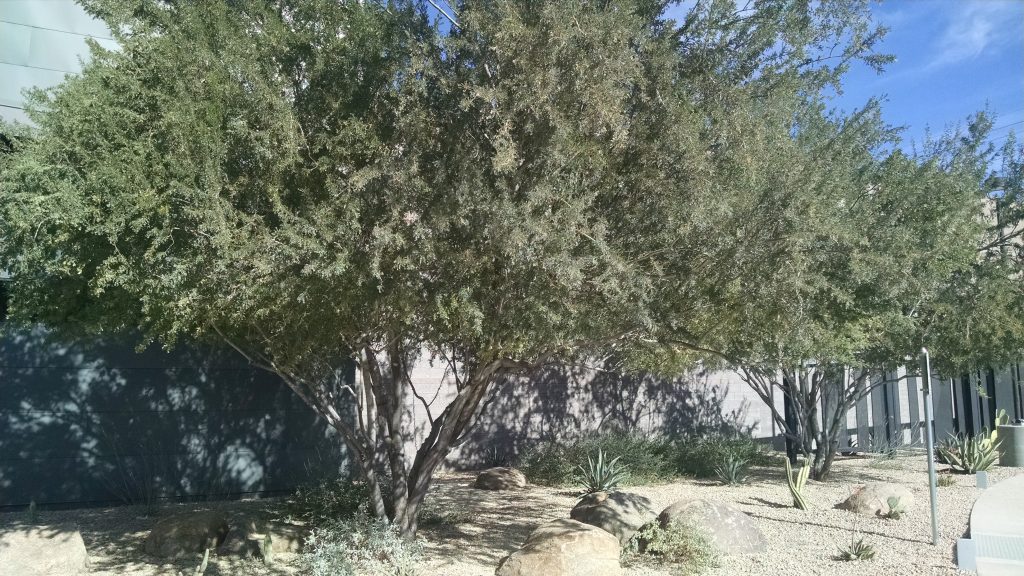
Site remodel in 2015 relocated numerous 60″ boxed Ironwoods (Olneya tesota) by Native Resources. Photo RBond
After
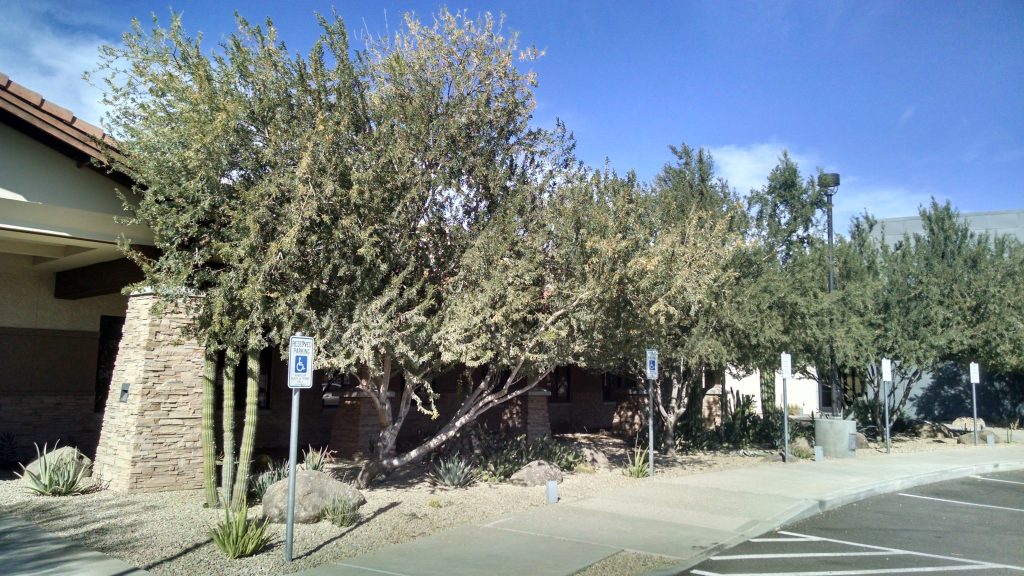
More relocated Ironwoods (Olneya tesota) salvaged from site in 2015 and replanted. Photo RBond
Before
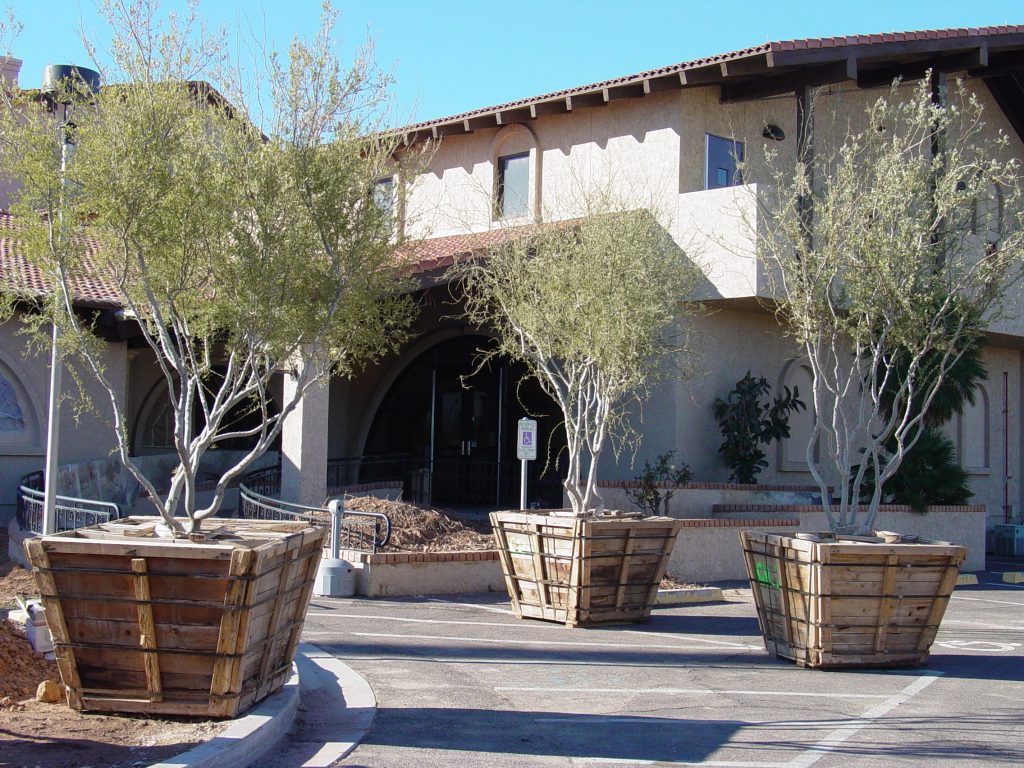
Front entrance to the old administration building remodeled in 2008. Nursery grown 36” boxed Iron woods brought in and planted by Green Landscaping in 2008. Shown below in 2018. Photo RBond
After

Light tip pruning, same Ironwood.
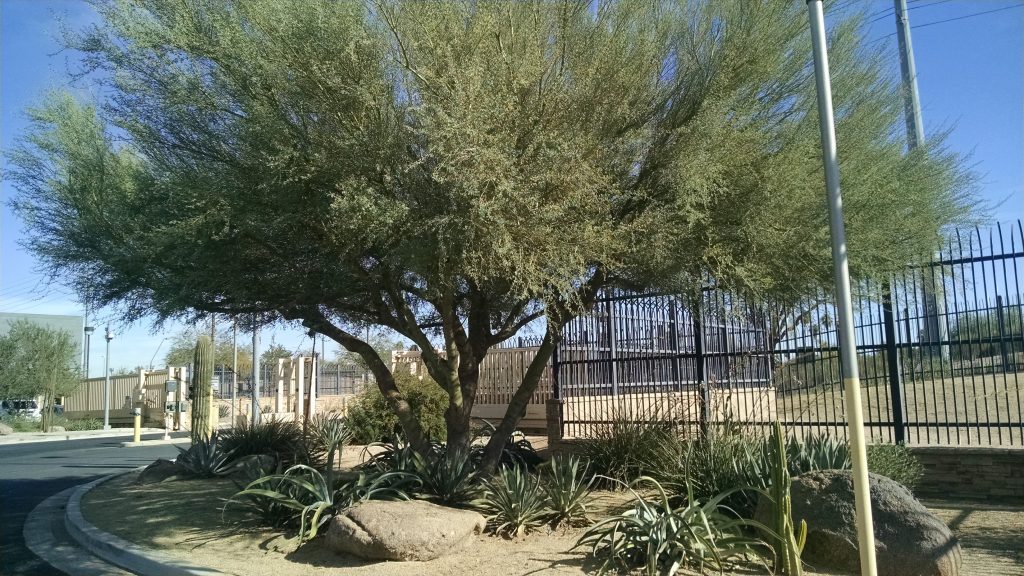
Other Palo Verde’s Sonoran Palo Verde (Cercidium praecox) planted in 2008 pruned out by the front entrance, Weber Agave (Agave vilmoriniana). Photo RBond 2018
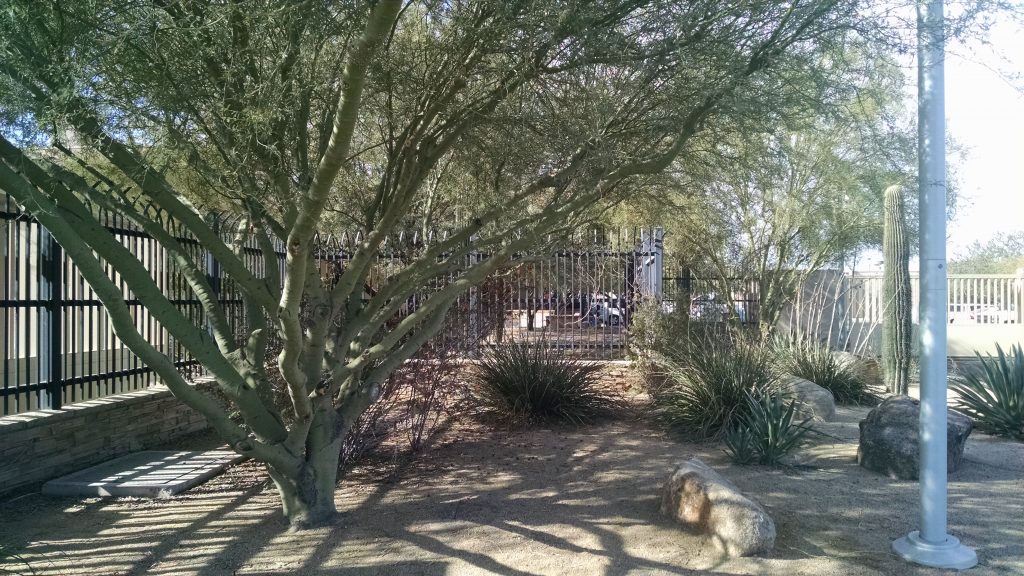
Careful pruning over ten years creates an attractive bosque effect and wild life habitat. Photo RBond 2018
The first ten years devoted to ground work, tipping, crown elevating and light pruning achieved an attractive balance between security, aesthetics, habitat and tree health.
